Heavyweights
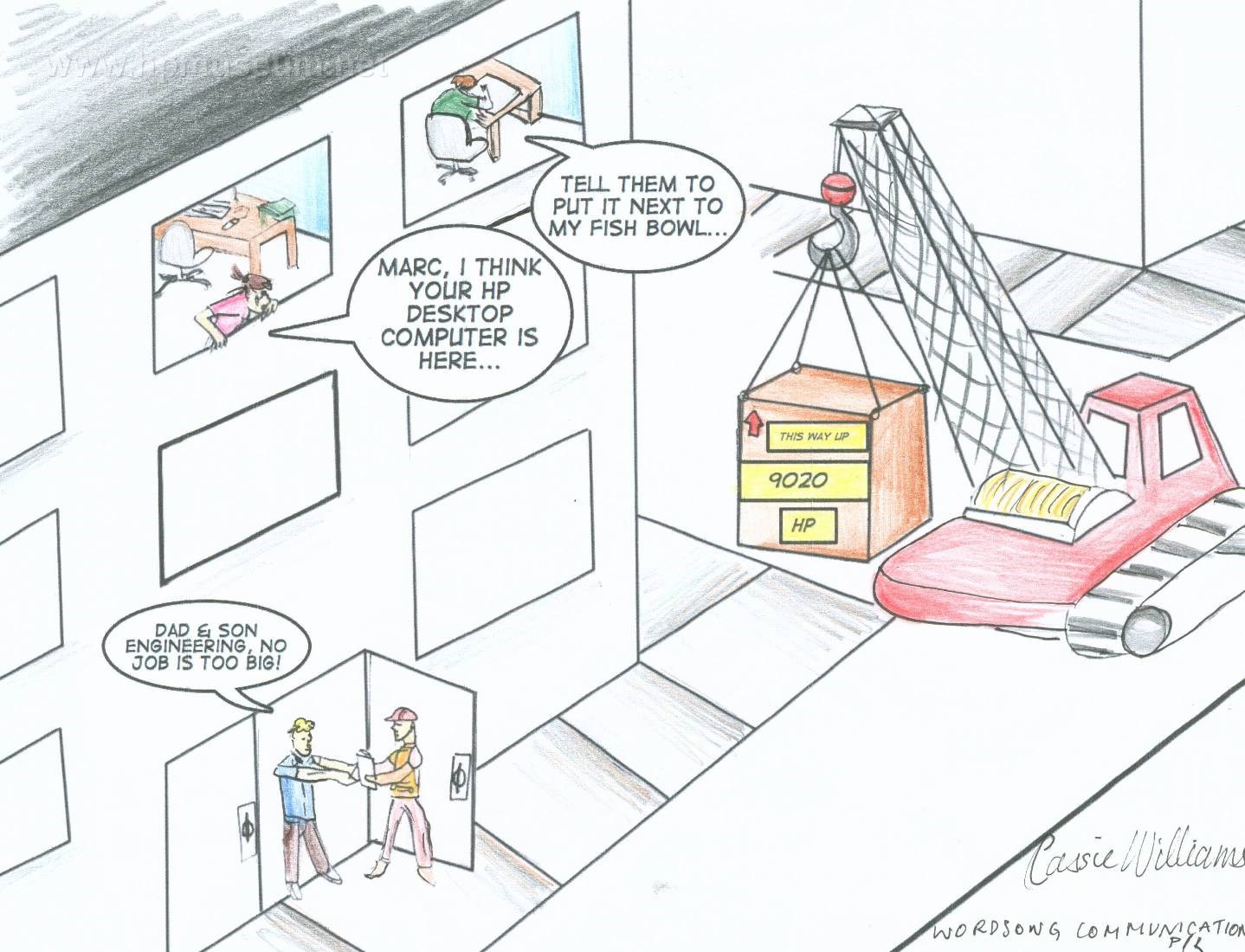
The most common surprise/disappointment that comes from visitors to the museum is "Don't you have any big computers that fill up an entire room?" The answer is "No". HP never made such computers. After the era of the vacuum tube (1960s), there was really no need to. Many of the larger computers made during this time were byproducts of industry inertia or even lazy design. Even HPs first computer, the 2116A, was a mere 104 kg (229 lb), relatively petit for its day. From the beginning, HP made computers that were robust and could operate in mining and manufacturing environments as well as in computer clean rooms. These computers did not have to be big. In fact, many of HPs technology contributions in the computer industry were related to reducing the size of equipment.
That all being said, there were more than a few HP computers that seem to have lost their bathroom scales. Working on these machines for any period of time certainly obviates the need to visit the gym in the near future (a visit to the chiropractor is generally more in order). Our favorite heavyweights:
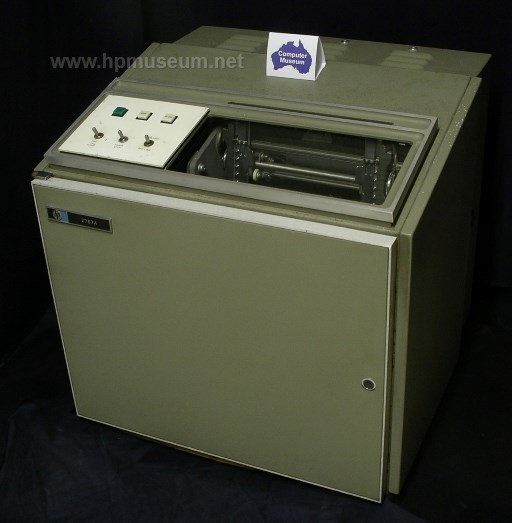 |
The 2767 has the highest specific gravity footprint of our "heavyweights" (excluding hard discs). For an old system printer, this machine is relatively small. It has a footprint of less than 0.32 square meters. But the 2767 weighs 73 kg (161 lb)! The 2767 was a pure OEM job from Dataproducts. The only HP thing about this printer is the badge on the front. If you ever get stuck between a rock and this old beast, get a rock breaker! |
|
| 2767A Printer | ||
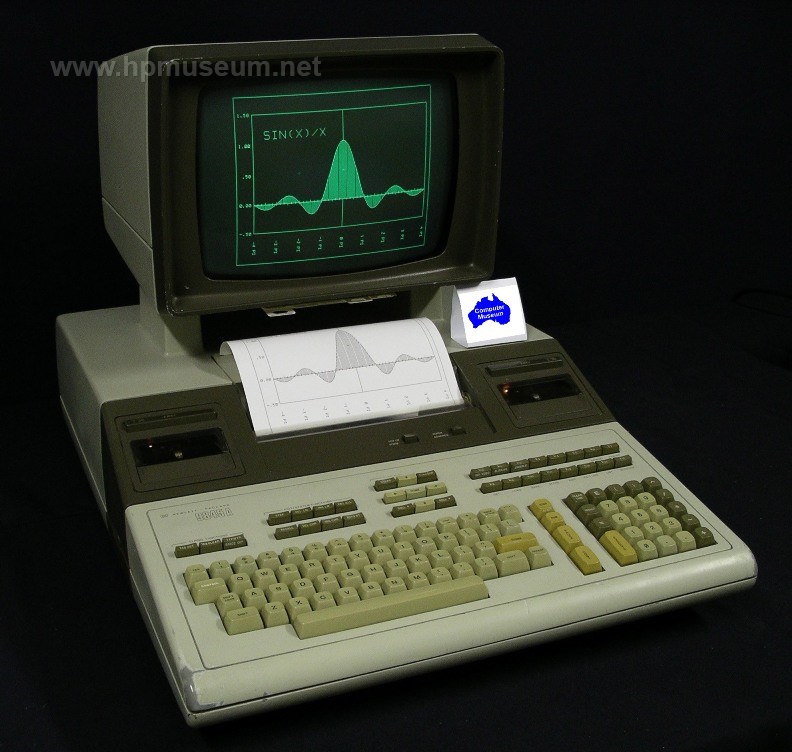 |
Early HP desktop computers were big and heavy by today's standards. Subsequent machines were more powerful but smaller (like the 9815 and 9825). In 1977, the trend of more bang for the pound ended with the introduction of the 9845, HPs first "modern-looking" desktop computer. Of course, the 12-inch CRT was a big contributor to the weight gain, but it was the 9845's casing that really added the beef. While we haven't tested the theory, these cases are probably bulletproof. Overall, in 1977, the 9845 was an excellent technology value at only $338 per kg. |
|
| 9845 Computer | ||
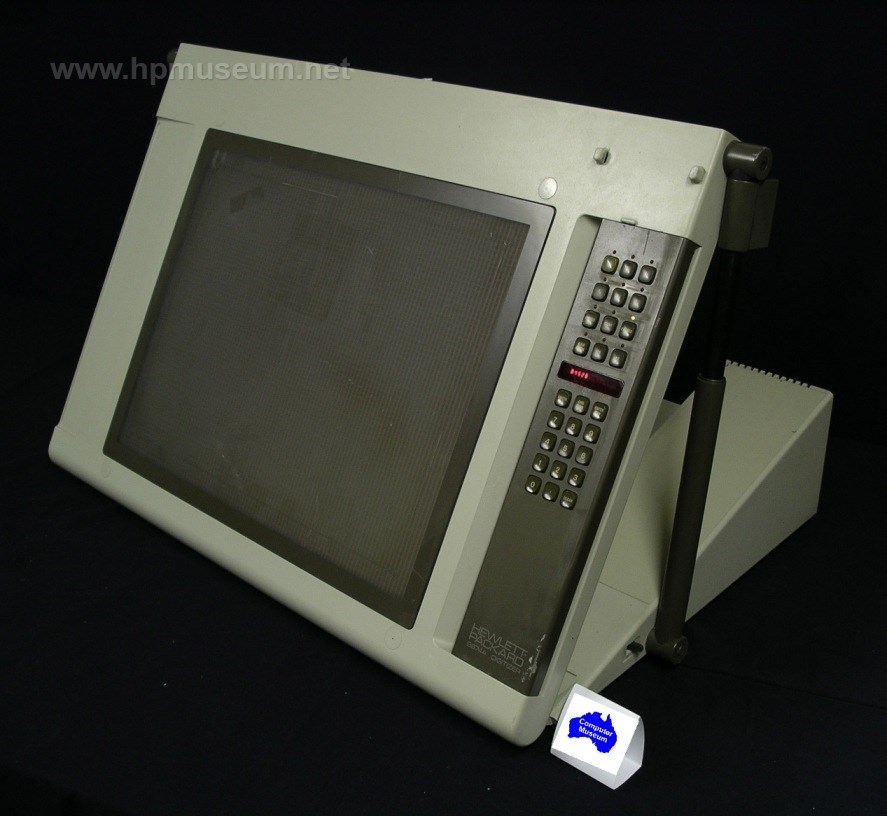 |
A 60 pound mouse! Well, that's probably a little harsh. In addition to doing screen menu picks and object selection, digitizers were the primary means of entering drawings into computers in the early days. The 9874A followed the 9864A in HP's digitizer development. The 9874A was much larger and much more complex. If simplicity was a design objective here, it wasn't achieved. Strange bead fellows? The 9874A was often used with Series 80 computers which it dwarfed! After the 9874A, HP's digitizers got much simpler and much smaller, beginning with the 9111A in 1980 (which was a mere 13 pounds). |
|
| 9874A Digitizer | ||
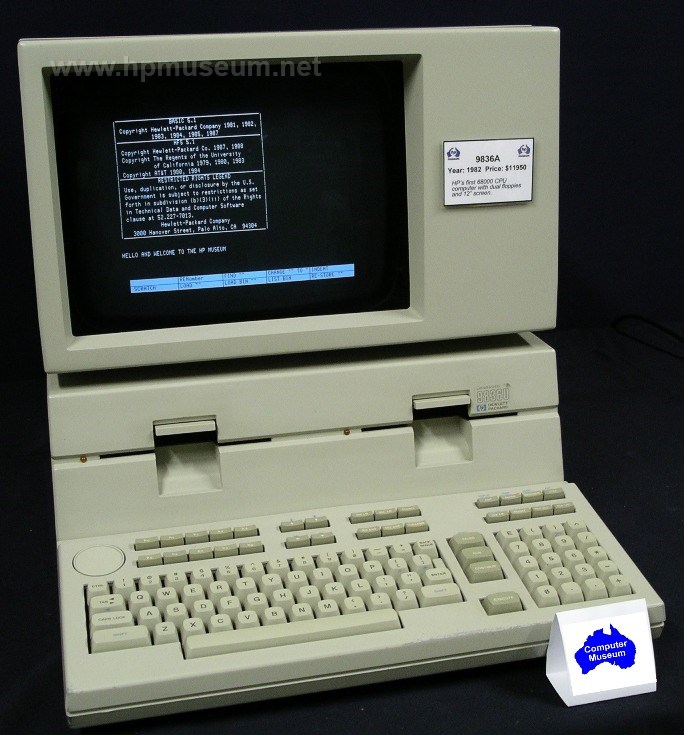 |
After the 9845, HP desktop computers continued to get smaller and more powerful. The 85 was an excellent example in 1979. This computer included a built-in CRT, printer and tape drive, but it weighed only nine kg (19 pounds). In late 1981, HP introduced its new heavyweight champion. Although four years younger, the 9836 (35 kg) was actually a little heavier than the 9845 even though the 9836 did not carry the extra 5 kg of the 9845's internal thermal printer. In 1982, the 9836 was beaten in the heavyweight division by the all time champion 9020. The 9020 weighed 62 kg and no other HP desktop computer ever came close. HP desktop computers got significantly smaller (and stayed that way) after the 9020. |
|
| 9836 Computer | ||
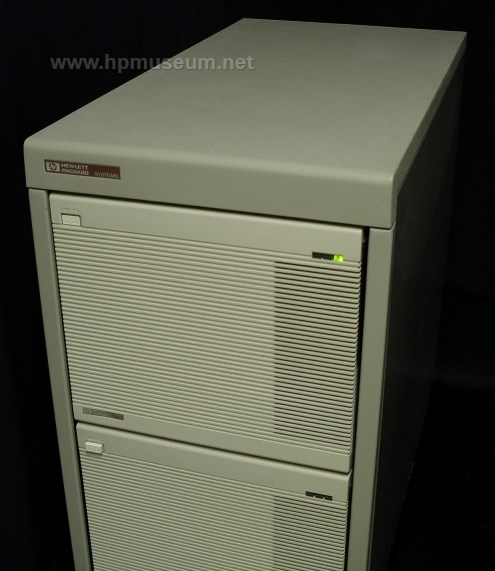 |
The 7937 was a late entry into the heavyweight competition. By rights, it really should be excluded because it's a hard disc drive that usually rode around in a very comfortable cabinet on wheels (and rarely had to be picked up by museum curators and others). This drive is somewhat unusual in that part of the service kit for the HP Customer Engineers to use was a portable crane for when one of the complete units had to be installed or removed from the cabinet. The individual parts (including the mechanism) could be removed and replaced without the crane. |
|
|
7937 Disc Drive |
| Back |
^ TOP©2004 - 2026 BGImages Australia - All Rights Reserved.
The HP Computer Museum and BGImages Australia are not affiliated with HP Inc. or with Hewlett Packard Enterprise. Hewlett Packard and the HP logo are trademarks of HP Inc and Hewlett Packard Enterprise. This website is intended solely for research and education purposes.
